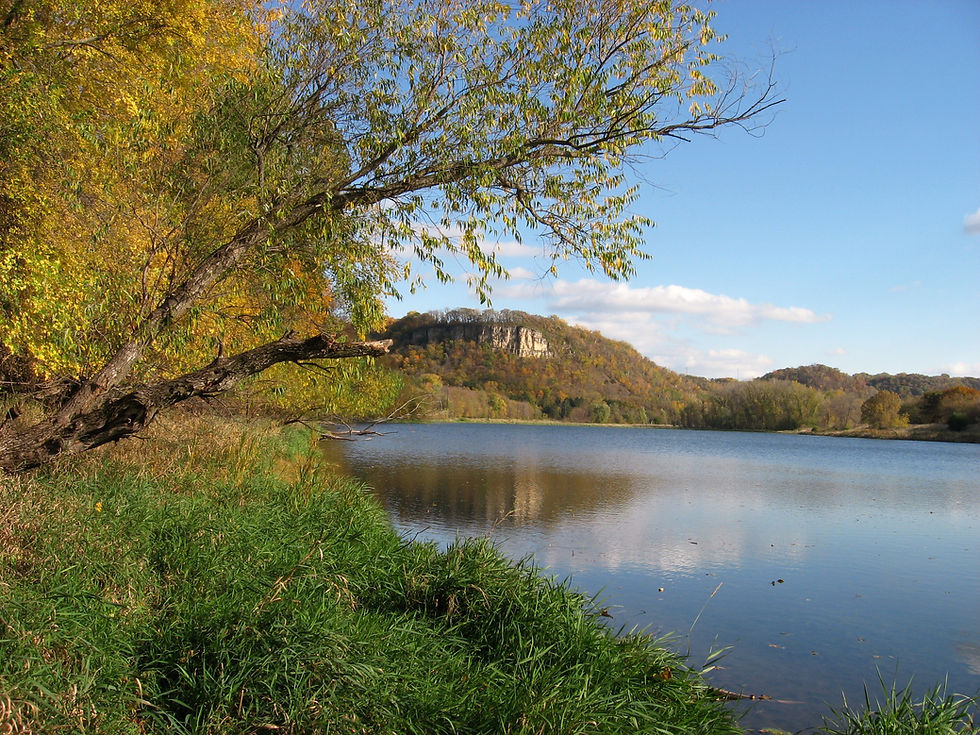Migration And A New Discovery
- Bruce Ause
- Sep 20, 2016
- 2 min read

White Pelicans
On Friday September 16th, I observed the first significant flock of white pelicans at the Head of Lake Pepin. There were over 30 of these amazing birds resting in shallow water. On a normal summer, we can expect from 100 to 200 non-breeding adult pelicans spending July and August in this area. The typical migration period of adults and young pelicans from their nesting grounds in western Minnesota being by mid- September.

Flock of white pelicans
Unfortunately this summer with the high river levels from 3 to 6 feet above normal, the pelicans did not show up. They do most of their feeding for small fish in the shallow backwaters by swimming as a group in a line working towards shore. Once the forage fish are encircled, the pelicans will thrash their feet spooking the small fish to the surface for easy capture with their large bills.

Great Blue Heron
Another migrating bird I have been observing in increasing numbers lately is the great blue heron. The shallow backwaters of Wacouta with large schools of small fish provide excellent habitat as a staging area for the herons. As we get closer to mid-October, it will be common to see upwards of 30 to 40 herons in a single morning of paddling. Then with a major cold front moving through, most will depart during a single night.

Swamp Loosestrife
While paddling my canoe early in the morning of September 14th on Wacouta bay, I came across a very small patch of the native plant known as Swamp Loosestrife (Decodon Verticillatus). This is not to be confused with the invasive Purple Loosestrife (Lythrum salicaria). It was growing amongst a huge patch of sedges.

Swamp Loosestrife
According to the Minnesota DNR, this plant has been listed as one of special concern since 1984. Because of heavy development and intensive farming practices, this rare plant has become less frequently observed. This might explain why I observed this small patch of swamp loosestrife at the mouth of Bullard's creek where it enters the muddy waters of Wacouta bay.




Comments